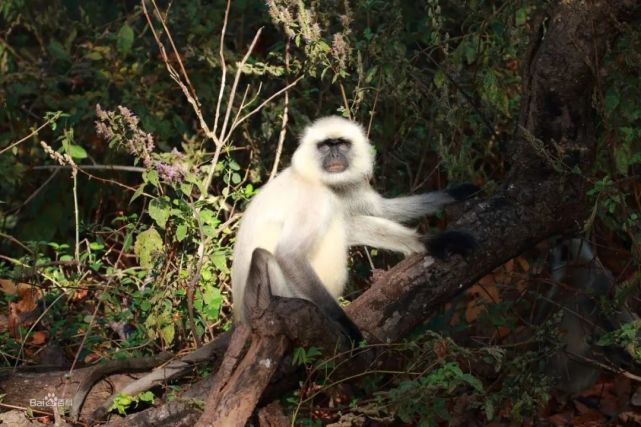Shortridge’s Langur
IUCN
LCBasic Information
Scientific classification
- name:Shortridge’s Langur
- Scientific Name:Trachypithecus shortridgei, Xiao's black-winged monkey
- Outline:Primates
- Family:Primates Cercopithecidae Trachypithecus
Vital signs
- length:109-160cm
- Weight:17-40kg
- lifetime:20year
Feature
It is now a first-class protected wild animal in China.
Distribution and Habitat
Mainly distributed in southeastern Tibet, China, and along the Yunnan border on the west side of the Nujiang River to the Gongshan Mountains in the west; east of the Chindwin River in northern Myanmar.
It mainly inhabits dense evergreen broad-leaved seasonal rain forests and semi-evergreen forests. It is mainly an arboreal species, with a known distribution altitude of 600-1200 meters. It is rarely seen in the highlands and is significantly abundant in the lowlands. However, it is also not found in the lower Chindwin River basin in northwestern Myanmar. The living area generally varies from evergreen forest to mostly deciduous forest.
Appearance
The body is silver-gray, the hands and feet are dark gray, and the tail is darker until the tip of the tail. The legs are slightly light gray, and the lower abdomen is grayer. The facial skin is bright black, and the eyes are surprisingly yellow-orange. The narrow black brow bands are upturned at the ends of the two sides into "wheat ear tips". Similarly, the cheek whiskers are bent down at the corners of the mouth into "wheat ear tips". Juveniles are orange.
This species is distinguished from the Philippine black leaf monkey in that the face is completely black, the lips and around the eyes lack pale white spots, the ends of the limbs and most of the tail are black, the incisors are almost perpendicular to the upper and lower collars, the upper and lower incisors have deep grooves, and the lingual grooves.
It is a diurnal social animal, with 10-30 individuals in each group, arboreal, and feeds on various fresh leaves, buds, flowers, and fruits.
Details
Shortridge's Langur is a primate found in northeastern Kachin State, Myanmar, and northwestern Yunnan Province, China. It was once thought to be a subspecies of the pileated langur (Trachypithecus pileatus).

Xiao's black-winged monkeys are diurnal and live in groups of 2 to 15 individuals. When wandering, they usually move forward in an irregular formation and flee in the same direction when startled. Social primates, who indulge in extensive play in infancy and, as adults, transmit affection to each other through well-developed vocal communication and strong tactile gestures, including grooming and face-to-face interactions and hugging during their upbringing and daily life. information between them.
Xiao's black-leaved monkeys usually consist of an adult male and several females and their immature offspring. This single system ensures that a dominant male can mate with all the females in the family and must protect the young in the family. Other solitary adult males (usually driven out of the original family group as adults) and sub-adult males form separate Some multi-male and multi-female groups are also found. When the group moves or stops to eat, the females control the direction of the family, while the males stay behind.
Xiao's langurs wake up at dawn but remain in their sleeping trees until the sun rises fully. They They may simply move to higher branches to soak up the sun before searching for food. This species drinks from the hollows of branches and rarely descends to the ground, especially when young. They are found mainly in the early morning and late afternoon. They eat at dusk and find a suitable sleeping tree, choosing a different tree each day. Each monkey sleeps alone in the tree, while the mother sleeps with her cub.
The wild population of Xiao's black leaf monkey is very rare and its distribution is very limited in China; the population in China is estimated to be no more than 500-600 (2001). The main threats to this species come from They are caught for food and traditional "medicines" and are sometimes seen as illegal exports to China. Habitat loss and fragmentation from agriculture and timber extraction are also major threats. Much of the Chindwin River and adjacent plains, where the species is found, is planned to be flooded by a hydroelectric dam. In addition to direct habitat loss through flooding of the reservoir, this will lead to a significant loss of hunting. increase, as construction workers are expected to live on the land, and the resulting reservoir will greatly increase accessibility to large areas of foothill forest. Without specific targeted management, hunters will undoubtedly take advantage of this. There is a very large area of suitable habitat within the Hukaung Tiger Reserve, but it is unclear whether this area supports morphologically typical animals. If the Shoal's leaf monkey does not survive in the Hukawng Valley, habitat loss will pose a threat to the species. Seriously threatened, as most other protected areas in parts of Myanmar are highlands, and habitat below 900 meters is severely degraded and fragmented, a process that is ongoing.
Listed in the IUCN Red List of Threatened Species in 2008 ver 3.1 - Endangered (EN).
Listed in the first level of the "List of National Key Protected Wildlife in China".
Protect wild animals and stop eating game.
Maintaining ecological balance is everyone's responsibility!








